
Manufacturer's Specifications
System Type: Four-piece stereo system; acoustic suspension, sealed-box woofers.
Drivers: 8-inch (203-mm) woofer, 4-inch (102-mm) midrange, and 1 3/4-inch (44-mm) tweeter.
Crossover Frequencies: 140 Hz and 1.9 kHz.
Impedance: 6 ohms nominal.
Recommended Amplifier Power: 25 watts minimum.
Dimensions: Low-frequency units, 4 1/2 in. H x 21 in. W x 12 in. D (11.4 cm x 53.3 cm x 30.5 cm); satellites, 8 1/8 in. H x 5 1/4 in. W x 4 in. D (20.6 cm x 13.3 cm x 10.2 cm).
Weight: Low-frequency units, 16 lbs. (7.3 kg) each; satellites, 5 lbs. (2.3 kg) each.
Price: $499 per speaker system.
Company Address: Cambridge SoundWorks, 154 California St., Newton, Mass. 02158.
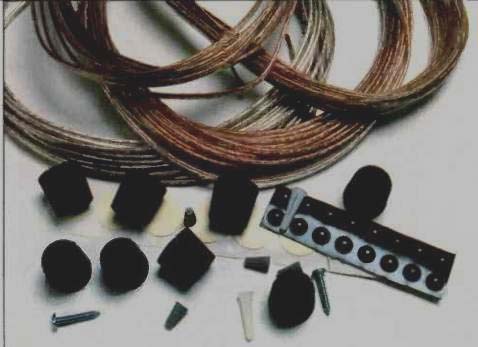
The Cambridge SoundWorks Ensemble loudspeaker was designed by Henry Kloss, a man whose name is synonymous with audio revolution. Is revolution too strong a word? Consider that, in 1954, about the only way an audiophile could get clean 30-Hz bass was with a refrigerator-sized cabinet in the listening room or a concrete horn built outside the room. However, in the fall of 1954 at the New York Audio Fair, Edgar Villchur and Henry Kloss unveiled the Acoustic Research AR-1. a 2-cubic-foot speaker with astounding 30-Hz bass.
Villchur and Kloss battled the "refrigerator" technology for several years, slowly gaining acceptance for the radical acoustic-suspension design. The stereo LP, introduced in 1957, gave audio enthusiasts three choices-mono, two refrigerators, or acoustic suspension. The giant speakers died like dinosaurs. The makers of the mighty Klipschorn even introduced a bookshelf model which they defiantly named the "Heresy."
Kloss later founded KLH, which specialized it smaller speakers and integrated high-fidelity systems. In 1967, he started Advent and developed large-screen television as well as some good small speakers. This was the birth of the home video theater. Today, the Kloss three-tube design is used by every home projection system. Kloss introduced the Advent loudspeaker to help finance the expanding video business, but it became the largest selling speaker of all time. Another "side" project was the development of the first cassette deck with Dolby B NR. After starting Kloss Video and later selling it to Ampro Corporation, Kloss returned to speakers, teaming with former Advent and Kloss Video associate Tom DeVesto to form Cambridge SoundWorks.
Naturally, one wonders if Cambridge's Ensemble loud speaker will further the Kloss legend by kindling another revolution. History will probably not honor it as another acoustic suspension, video projector, or Dolby cassette type of audio breakthrough, but it could set new standards for value and marketing savvy. It might even replace the Advent as the best-selling loudspeaker ever.
The Ensemble is sold direct from the factory in a 50-pound box for $499 plus shipping. It is a four-piece stereo system: Two woofer and two satellite enclosures. Plenty of speaker wire and detailed setup instructions are included.
You can send a check or phone Cambridge's toll-free number (800-252-4434) and put it on your credit card. You'll receive the package in one to five days, depending on how far you are from the Boston area. An Ensemble can be air shipped in the U.S. overnight or to any place in the world in three days and still look like a bargain. Cambridge will accept the system back within 30 days and give a full refund. You are only out the shipping-one way.
Hassle-free home listening, Cambridge believes, is the only way to find out if a speaker system is right for your room. Given this, the factory-direct route seems to be as good as lugging a system home and back to a stereo store.
Of course, a good stereo store has other models for you to sample as well as qualified advice. At this writing, Cambridge offers only the Ensemble, but they take pride in their toll-free telephone advice, available seven days a week.
"Value," which means a high performance-to-price ratio, is stressed by Cambridge. Direct-mail selling helps keep the price low: performance is advanced by using a woofer/ satellite format and by concentrating on factors Kloss believes to be perceptually important.
The satellites are tiny, so it is easy to place them for best soundstage and imaging. The woofers operate up to 140 Hz, so they should be located in the same end of the room as the satellites, to avoid rearing upper bass coming from a strange direction. Still, this gives great ability to acoustically match tie system to the room. For more bass, you move the woofers closer to room boundaries and to each other. The effect can be very strong. A recent paper in the Journal of the Audio Engineering Society, Glyn Adams' "Time Dependence of Loudspeaker Power Output in Small Rooms" (April 1989), predicts 20-dB, position-dependent variations in low-frequency response. The small Ensemble woofer cabinets are designed to tap this "free" bass, which translates to "value" by increasing performance.
Henry Kloss has long espoused the concept of "octave-to-octave balance" as the most critical element in perceived loudspeaker quality. This means that the frequency response measured in the room and averaged over an octave bandwidth must be uniform. Another way of saying this is that an octave-band equalizer can be used to fix many bad-sounding loudspeakers. It's not that gross nonlinearity or extreme narrow-band peaks can be ignored-Kloss just believes these are not the problems usually encountered.
The portability of the four Ensemble components allows the user to acoustically equalize the loudspeaker for best octave-to-octave balance.
Another Kloss tradition embodied in the Ensemble is the acoustic-suspension sealed-box woofer. The driver's cone suspension is made extremely compliant, with 90% of the necessary stiffness being provided by the very linear air spring of the sealed enclosure. The most popular alternative is the vented design, which uses an acoustical resonance to load the driver and extend bass response. Although vented systems have been around for at least 50 years, they suffered from a poor reputation for "boomy" bass until the early '70s. That was where the work of Thiele and Small simplified proper design to equations which could be evaluated on a hand-held calculator. Their work started the vented-box era, which dominates in today's designs. The "vented boxers" claim a lower-3 dB point, increased efficiency, and a smaller cabinet. The "acoustic suspenders" counter that there is too high a price to be paid for these advantages.
The price paid for the vented box's lower -3 dB point is a fast roll-off-typically 24 dB per octave-below that point.
My own experience indicates that listeners perceive bass "cutoff" to occur when the response is about -10 dB. Other things being equal, an acoustic-suspension system, with its 12-dB/octave roll-off, might be perceived as extending lower in frequency, even though its-3 dB point is higher than the vented design's. In addition, the vented box's faster roll-off results in more ringing on transients.
The vented boxers point out that their system's acoustic resonance at cutoff results in greatly reduced cone motion and reduced distortion. The acoustic suspenders counter that, in the range below the acoustic resonance, vented-box cone motion increases dramatically and will cause even more distortion. In addition, they say that a large vent is necessary for low distortion, and this can add significantly to the cabinet volume.
The arguments go on endlessly, leaving one with the feeling that there is no free lunch, only a choice of restaurants. I feel that the choice is only difficult for systems whose goal is response to between 30 and 40 Hz. I would tend to go sealed for classical purity and vented for maximum rock punch. For small systems not aspiring to extend below 40 Hz, I prefer sealed for transient response and for protection from below-band frequencies. For big systems intending to do damage below 30 Hz, I say you might as well take the advantages of vented, because 25-Hz ringing is not a musical or audible issue. Also, there are few signals low enough in frequency to cause below-band over-excursion. (These simplified recommendations are subject to other design options, such as the use of high-pass filters.) The Ensemble uses a woofer enclosure for each satellite, as opposed to the popular single subwoofer module. Al though I can accept the common-subwoofer concept at very low frequencies, the Ensemble's 140-Hz crossover frequency is a little high for the common-bass assumption.
Also, be it necessary or not, two small woofers are easier to place than one double-sized driver. The Ensemble woofers are especially easy to position because of their flat slab cabinets, finished in dark gray laminate on all six sides.
The tiny satellites, each housing a 4-inch midrange and a 1 3/4-inch tweeter, are solid, dense, and precisely machined.
The box has a perforated black metal grille, rounded corners, and a gray Nextel finish which makes it feel a little wet.
Whether this modern styling appeals to you or not, the satellites are so small and neutral in appearance that they are unlikely to conflict with any decor.
There are no controls on the woofer or the satellite. Because there is a crossover in both the satellite and the woofer, connection can be made from the amp to either the woofer or the satellite, with another cable connecting the two boxes together. It is easier than hooking up Christmas-tree lights. Terminals are gold-plated, five-way binding posts on standard 3/4-inch centers, with big holes that will directly accept large-diameter specialty speaker cable. If you are into the exotic, the speakers can easily be bi-wired to a single amp.
Cambridge recommends initially hooking up the full 100 feet of 18-gauge zip cord supplied, so you can experiment with speaker position. When you find the best location, you can cut the cable to size or, if you want, purchase the exact lengths of specialty cable. If you need additional cable, call the toll-free number, and Cambridge SoundWorks will send it free of charge. Although the Ensemble manual is the best I've seen for installing speakers, additional phone help is always available. I was told that the manufacturer's goal is not merely to satisfy but to delight the customer; they figure 25% of their business comes from referrals by such "de lighted" owners.
Measurements
Input impedance magnitude as a function of frequency is plotted in Fig. 1. A peak at 40 Hz is followed by a broad low area averaging 4 ohms between 60 and 500 Hz. This low area qualifies the Ensemble for a 4-ohm nominal rating.
Figure 2 shows the impedance in terms of reactance and resistance. A large reactance (vertical) with little resistance (horizontal) is difficult for an amplifier to drive. The Ensemble is most difficult around 60 Hz but should not prove a problem for any 4-ohm-rated amplifier.
Achieving a reflection-free or anechoic measurement the Ensemble required a modification of Audio's usual technique because of the woofer and satellite being in separate enclosures. The satellite, which operates above 140 Hz, will suffer a response modification from reflections off of the woofer cabinet if the two are too close together. I moved them apart for this measurement; this is how they very often will be used in the home. The satellite was measured in the usual manner, one meter away along the axis of its front panel. The woofer was also placed one meter away from the omnidirectional microphone, but off to the side to avoid reflections. This TDS measurement geometry provides nearly anechoic data from the satellite combined with in-phase woofer output.
The anechoic measurement is made in two parts: An indoor, time-windowed measurement from 200 Hz to 20 kHz, and an outdoor, ground-plane measurement from 10 Hz to 1 kHz. The overlapping range from 200 Hz to 1 kHz serves as a calibration check; the curves are spliced together somewhere in this overlap range.
The combined plot of Fig. 3 is spliced at 350 Hz. The lower range does not have reflections windowed out, so a slight roughness is visible. Some of this is due to the interfering reflections between the two cabinets of the Ensemble.
The response shows bass roll-off below 60 Hz, a fairly smooth midrange, and slightly elevated highs extending to 20 kHz. This measurement does not reflect the bass boost and extension available by placing the woofer enclosure near room boundaries. These effects would depend on exact placement and the specific room.
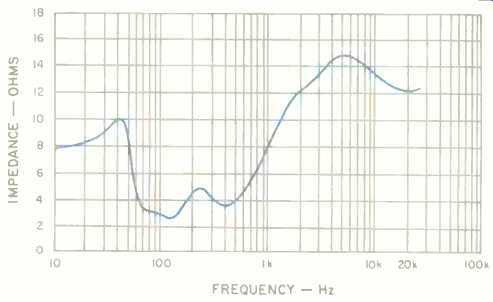
Fig. 1--Magnitude of impedance.
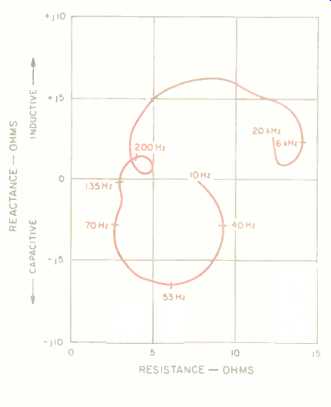
Fig. 2--Complex impedance.
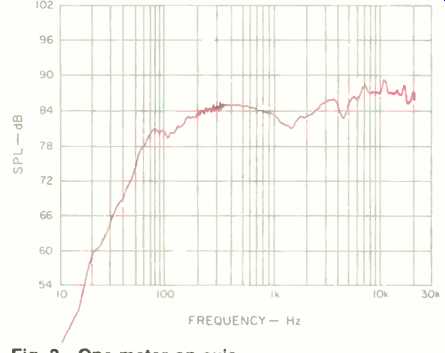
Fig. 3--One-meter on-axis anechoic frequency response with an input of 1 watt
into 4 ohms (2.0 V).
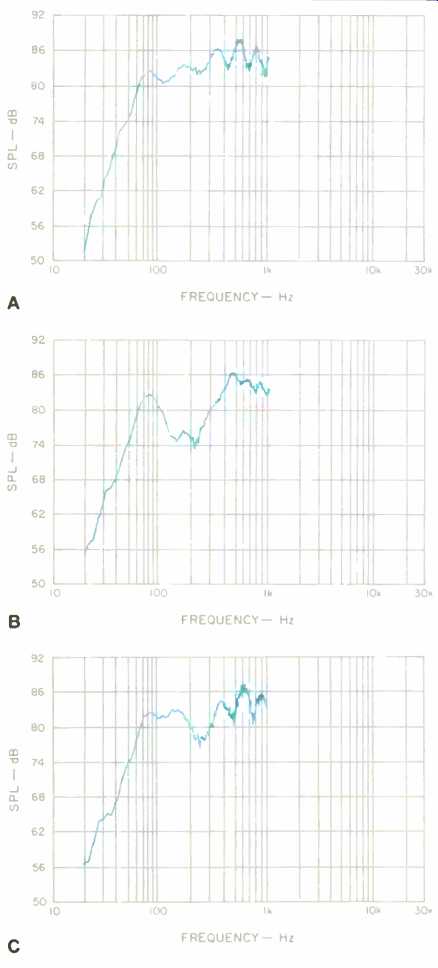
Fig. 4--Effect on system amplitude below 1 kHz of placing low-frequency module
at same distance from microphone as satellite (A), 24 inches closer than satellite
(B), and 24 inches farther than satellite (C). At the 140-Hz crossover frequency,
24 inches is 1/4 wavelength.
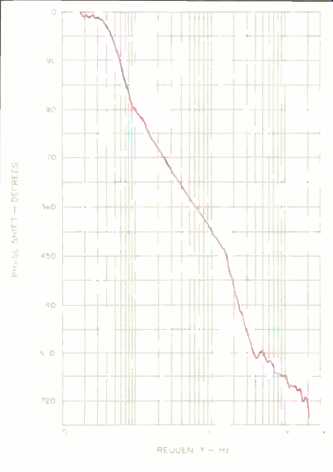
Fig. 5--One-meter on-axis anechoic phase response.
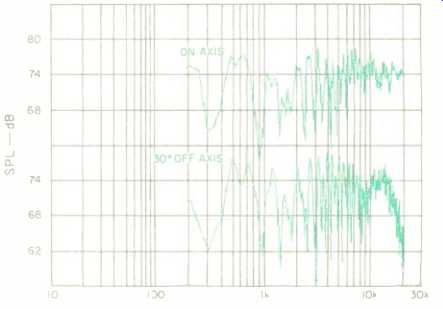
Fig. 6--Three-meter room response measured on axis and 30° off axis; off-axis
curve has been lowered for clarity.
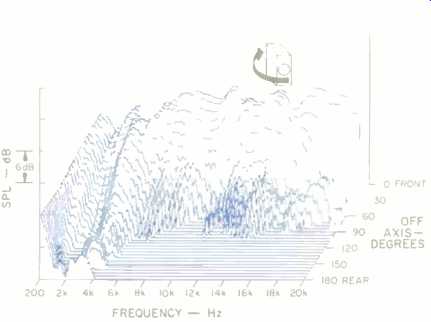
Fig. 7-Horizontal off-axis response plots taken from the front, around the
side, to the rear of speaker.
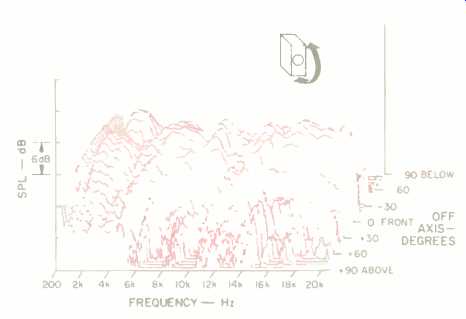
Fig. 8--Vertical off-axis plots taken from below, up the front, to top of
speaker.

Fig. 9-Harmonic distortion for the musical tone E1 (41.2 Hz).
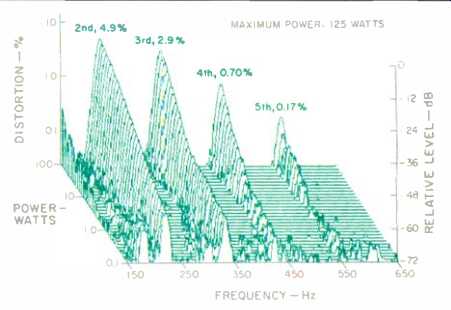
Fig. 10-Harmonic distortion for the musical tone A2 (110 Hz).
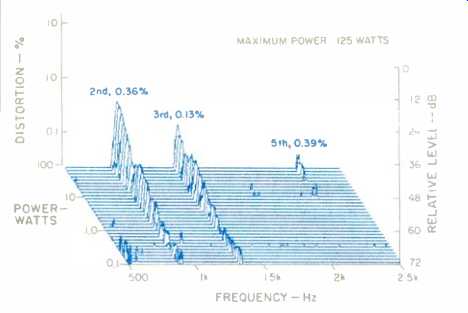
Fig. 11--Harmonic distortion for the musical tone A4 (440 Hz).
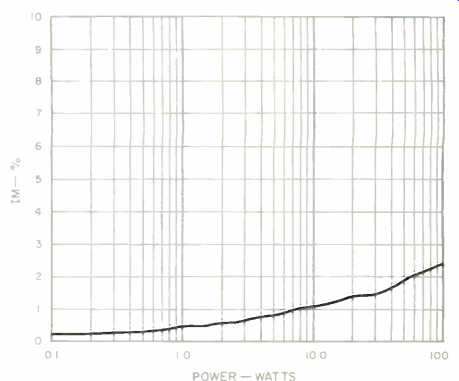
Fig. 12--IM produced by mixing A4 and E1 (440 and 41.2 Hz) in equal proportion.
In practice, the length of the air paths from the woofers and satellites to the listener will most likely differ. One effect of this is phase shift and the possibility of cancellation near the crossover frequency of 140 Hz. As a rule of thumb, holding phase shift to less than 90° should prevent cancellation. This translates to holding the distance between listener and woofer to within 24 inches of the distance from listener to satellite. Another source of interaction is the reflection of satellite radiation off the woofer enclosure or any other nearby object. Both these effects are shown in the three frequency response plots of Fig. 4. The lumpy curves should not be too distressing, as this is just a glimpse of the real world instead of anechoic measurement. Here, a frequency response notch indicates that this range of sound is radiated in a direction other than toward the microphone. In a real room, this sound will arrive at the listener after one or more reflections, which does not sound nearly as bad as never hearing the sound.
Psychoacoustic studies reported by Jens Blauert in Spatial Hearing (MIT Press, 1983, p. 206) indicate that time shifts of 1 mS or less can cause an image shift of 10° for frequencies as low as 100 Hz. For this reason, one should keep the woofers an equal distance from the listener, if possible. What all of this means is that despite Cambridge SoundWorks' wide range of recommended woofer location possibilities, the sound will probably be best if the woofers are the same distance away from the listening position as the satellites.
Anechoic phase response of the system is shown in Fig. 5. Having 720° of phase shift over the audio band is common in well-designed three-way systems. While it is not cause for concern, it makes one think twice about laying out a couple hundred dollars for speaker cable that promises 0.5° improvement at 20 kHz. The fact that the phase shift nears 0° below 50 Hz indicates that the Ensemble system's woofer polarity is the reverse of normal.
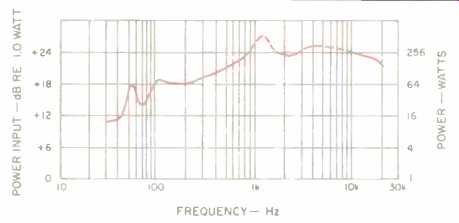
Fig. 13--Power linearity (input power handling vs. frequency for 1 dB compression
of the output).
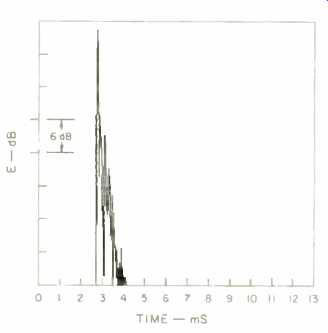
Fig. 14--One-meter on-axis energy vs. time.
The Ensemble's interaction with the walls, ceiling, and floor of a real listening room, during the first 10 mS, is plotted in Fig. 6 for on axis and 30° off axis. The reflections add to and subtract from the speaker's direct sound in a normal manner. Tweeter directivity is only evident at frequencies above 15 kHz.
Horizontal and vertical off-axis anechoic plots are shown in a 3-D presentation in Figs. 7 and 8. The Ensemble exhibits the omnidirectional radiation expected from any small speaker at low frequencies. The fairly narrow yet uniform directivity above 5 kHz is surprising. This could be used to widen the stereo "sweet spot" around the center line between the two speakers by rotating the satellites inward so their axes cross in front of the listener.
Figures 9, 10. and 11 show the level of harmonic distortion products for power inputs from 0.1 to 125 watts, for frequencies of 41.2 Hz (E1), 110 Hz (A2), and 440 Hz (A4), respectively. The percentage of distortion at 41.2 Hz, for all power inputs, is on the high side because it is shown as a percentage of a rolled-off fundamental. Up to the 100-watt limit, distortion SPL is not great. Distortion at 110 Hz is reasonable, and at 440 Hz, distortion is exceptionally low.
When a speaker simultaneously reproduces two tones, they may interact or modulate each other. Audio uses two musical tones, E1 and A4, 41.2 and 440 Hz, to test for this.
Results for the Ensemble, plotted in Fig. 12, are the lowest IM readings I have yet found in testing speakers for this magazine. The reason is that the 140-Hz crossover point assigns the tones to two separate drivers, so there is almost no interaction. This is not a trick of the measurement; the Ensemble will have little modulation of highs due to low bass notes in music.
Power linearity, plotted for the Ensemble in Fig. 13, is a full-range test of power handling. Power is increased at each frequency, until the acoustic output fails to increase along with it. The Ensemble accepts only moderate power in the bass, but it is linear in most of the upper range, with the maximum 256-watt input I use for these tests. It is evident that using amps with more than 150 watts output would be of little benefit with the Ensemble.
Dispersion of acoustic energy in time is plotted in Fig. 14.
The Ensemble behaves in an excellent manner, showing synchronized midrange and tweeter arrivals and freedom from diffraction, reflection, and resonance.
Use and Listening Tests
The Ensemble is efficiently packaged and well protected for shipping, and I was amazed at the sheer amount of stuff you get for $499. In addition to the four fully finished speaker boxes, there are four lengths of wire with the ends stripped, solderless wire nuts, two sizes of stick-on rubber feet (the large ones didn't stick too .well), and even screws and plastic anchors for hanging the satellites on a wall. The 13-page manual, as I mentioned, is excellent.
As Cambridge suggests for initial setup, I ran the full length of supplied wire between the four cabinets and a 200-watt-per-channel amplifier. I positioned the satellites where small speakers generally sound best in my 18 x 25-foot room, centered along the short wall, about 8 feet apart, 30 inches off the floor, and well out from the wall behind them. Initially, I placed the woofers below the satellites on the floor. The sound was spacious yet retained a seamless stage of instrument locations. This told me that the satellites were in a good starting location. The bass was too thin, however, so I searched for more.
The next position of the woofers was in the corners behind me. "Bass is non-directional, so it doesn't matter where the woofers are-right?" If you believe that, I've got a great deal for you on some beach-front property in Phoenix. Maybe rear placement works for true subwoofers most of the time, but with the Ensemble woofers going up to 140 Hz, it sounded weird-especially when I turned my head. The corner location did increase the bass, however. Next, I tried woofers along the walls at my sides and got separated lows and highs on male voice. Front corner placement provided too much bass, giving a woolly sound.
To save time, I used a third-octave real-time analyzer to position both satellites and woofers for smoothest response.
Room response with woofers at the side walls, but forward, ended up being impressively flat: About ±2 dB from 80 Hz to 16 kHz. However, a peak at 63 Hz remained, with fast roll-off below that. I think a careful listener can also accomplish optimal placement while listening to music, but it will take longer. Optimum locations will, generally, be different for different rooms, but I do recommend keeping the Ensemble's woofers in the same end as the satellites and approximately the same distance from the listener as the satellites.
But don't get the impression that the Ensemble is unusually location sensitive; it's just that the separated woofer allows the option of fine tuning.
Longer term listening confirmed the Ensemble's spacious, airy quality and accurate soundstage. Spectral balance, however, was a little too bright on the top end for my taste. This was corrected by angling the satellites inward so that I was slightly off axis. I was also bothered by a bass resonance when listening to the massed strings in the Third Movement of Schubert's Symphony No. 9 (Telarc CD-80110). This was probably due to the 63-Hz peak. I preferred this and other pieces of classical music with the woofers farther away from room boundaries.
The satellites have flat response and almost no distortion in the midrange: Their crossover is seamless, and directivity is excellent. Detail and focus, however, were not as good as I expected on some music. For instance, the title song from Jennifer Warnes' Famous Blue Raincoat (Cypress YD-0100) can be so detailed and intimate that it sounds like you are inside Jennifer's mouth. With the Ensemble, she was singing from the other side of the room. That's okay too, but for me, the communication of this gloomy piece comes from its intimacy.
So the Ensemble is not the best speaker system in the world. (I'll bet Wilson Audio and Infinity are breathing a sigh of relief, knowing that their $50,000 systems survived the challenge.) What Cambridge SoundWorks had in mind, however, was the best value in the world, and they may have it. Henry Kloss will have to settle for less than an audio revolution this time--just a winner.
-David L. Clark
(Source: Audio magazine, Sept. 1989)
Also see:
Canton Ergo 100 Speaker (Equip. Profile, Mar. 1992)
Quart 490MCS Speaker (Feb. 1992)
MB Quart 280 Speaker system (Dec. 1988)
Celestion UL-10 Loudspeaker (Jan. 1977)
= = = =